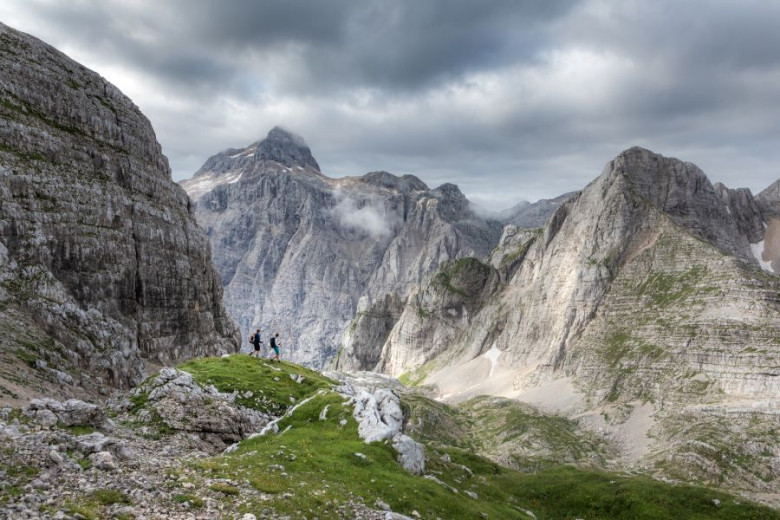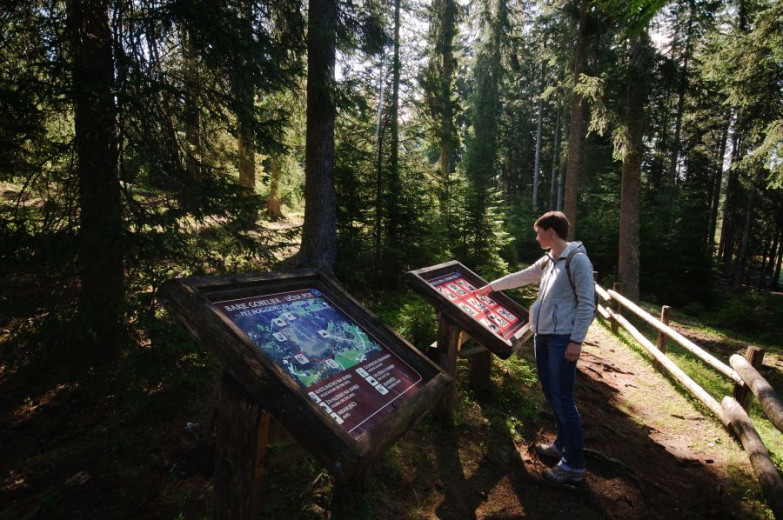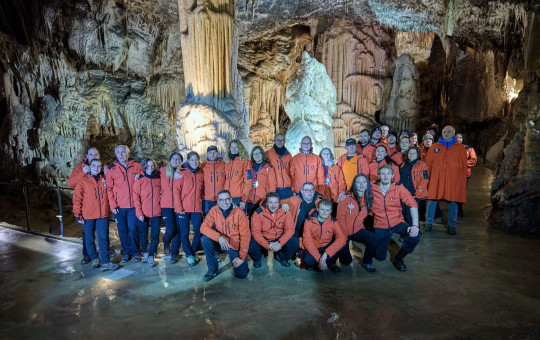Date: 5. April 2024
Time to read: 3 min
Nestled in the north-western part of Slovenia lies a true gem of nature – the Triglav National Park. With its pristine landscapes and breathtaking vistas, this park is a testament to Slovenia's commitment to preserving its natural heritage. As we mark the park's 100th anniversary, it's worth reflecting on its significance and the journey that led to its establishment.
Named after Slovenia's highest peak, Mount Triglav (2864 m), the Triglav National Park spans over 840 square kilometres, encompassing four percent of Slovenia's surface area. It is situated in the north-western part of the country, bordering Italy and Austria, and is a sanctuary for diverse flora and fauna.
Established in 1924 as the Alpine Conservation Park, the Triglav National Park is one of Europe's oldest protected areas. Its creation was a response to the growing threats posed by industrialization and human encroachment on natural habitats. Since then, it has served as a haven for endemic species such as the wolf, bear, and lynx, as well as a rich variety of plant life, including 19 endemic species.
A Century of Nature Conservation
Over the past century, the park has played a vital role in preserving Slovenia's natural heritage and promoting environmental awareness. It has also been a source of inspiration for countless visitors, drawn to its vast forests, majestic mountains, and pristine waters.
The 100th anniversary of Triglav National Park is a momentous occasion, commemorating a century of conservation efforts and highlighting the park's enduring importance. Under the theme "Conservation is Existence," we are reminded that the preservation of natural and cultural heritage is essential for future generations.
The journey towards establishing the park began in the late 19th century, with initiatives to protect the region's natural wonders gaining momentum in the early 20th century. The first efforts to protect part of the Julian Alps, dating back to 1906, stemmed from the ideas of seismologist and naturalist Albin Belar.
In 1924, the signing of the Alpine Conservation Park lease marked a significant milestone in Slovenia's conservation history, laying the foundation for the establishment of the Triglav National Park.
-
 Triglav National Park spans over 840 square kilometres, encompassing four percent of Slovenia's surface area. Photo: Aleš Zdešar/www.slovenia.info
Triglav National Park spans over 840 square kilometres, encompassing four percent of Slovenia's surface area. Photo: Aleš Zdešar/www.slovenia.info
-
 Over the past century, the park has played a vital role in preserving Slovenia's natural heritage and promoting environmental awareness. Photo: Tomo Jeseničnik/www.slovenia.info
Over the past century, the park has played a vital role in preserving Slovenia's natural heritage and promoting environmental awareness. Photo: Tomo Jeseničnik/www.slovenia.info
-
 The park drawns visitors due to its vast forests, majestic mountains, and pristine waters. Photo: Jošt Gantar/www.slovenia.info
The park drawns visitors due to its vast forests, majestic mountains, and pristine waters. Photo: Jošt Gantar/www.slovenia.info
As we celebrate the park's centennial, we honour the visionaries, scientists, and conservationists who have worked tirelessly to safeguard its biodiversity and beauty. Their dedication has ensured that future generations can continue to enjoy and benefit from this natural treasure.
The authorities are committed to preserving Triglav National Park and other natural wonders for generations to come. By protecting these precious landscapes, we not only ensure their survival but also enrich our lives and inspire a deeper appreciation for the wonders of nature.
The national park is a model example of successful harmonisation of different interests focused on a common goal: well-preserved nature, landscape and cultural heritage. The values of a national park are a motive and an attractive goal for visitors who respect the exceptional nature and cultural heritage as well as the peace and quiet of the area.
General information
- Highest point: Triglav, 2864 m
- Lowest point: Tolminska korita, 180 m
- Number of settlements: 33 (21 entirely, 12 partly)
- Number of inhabitants: 2.337 (January 2018)
Total: 83.982 ha.
- First protective area: 31.488 ha
- Second protective area: 32.412 ha
- Third protective area: 20.082 ha
International status
National Park (Category II) and Protected Landscape (Category V) according to the criteria of the World Conservation Union (IUCN).
Inclusion of the Julian Alps and the Triglav National Park in the international network of biosphere areas MAB (Man and Biosphere) - by Decision of the UNESCO - United Nations Educational, Scientific and Cultural Organisation (2003).
The Triglav National Park area is almost entirely a Special Area of Conservation and a Special Area of Conservation of the European ecological network Natura 2000.








